Specs Sheet
- Build Volume: 320 x 320 x 400mm
- Memory: SD Card
- Nozzle size: 0.4mm (Replaceable)
- Bed: Glass
- Software: CURA
- Materials: PLA, PETG, ASA, ABS, Flex
Introduction
The Mingda Magician Max is one of a new wave of 3D printers that offer a high-quality out-of-the-box solution that anyone can use. The size and volume of features crammed in for the price make the Mingda Magician Max stand out.
The Magician Max firstly offers easily initial assembly and set-up, a huge print platform and build area, one-click levelling, dual gear direct drive extruder with extensive material compatibility, fast print speed, auto filament detection and quiet printing.
Considering this volume of features, you would usually expect a much higher price tag. However, the company has managed to balance things with cheaper materials used for the build.
Design
There’s nothing too unusual about the design of the Mingda Magician Max; the company has essentially gone for the usual frame design bolted down onto an all-enclosed base. Currently, quite a few printers follow this style as it just helps to keep the electronics neatly tucked away and leaves minimal mechanics on display.
When the machine arrives, a little assembly is required for the vertical frame, and a few wires need to be popped into place. Thankfully the instructions are extremely clear, and even for a complete novice, the assembly process should be too challenging.
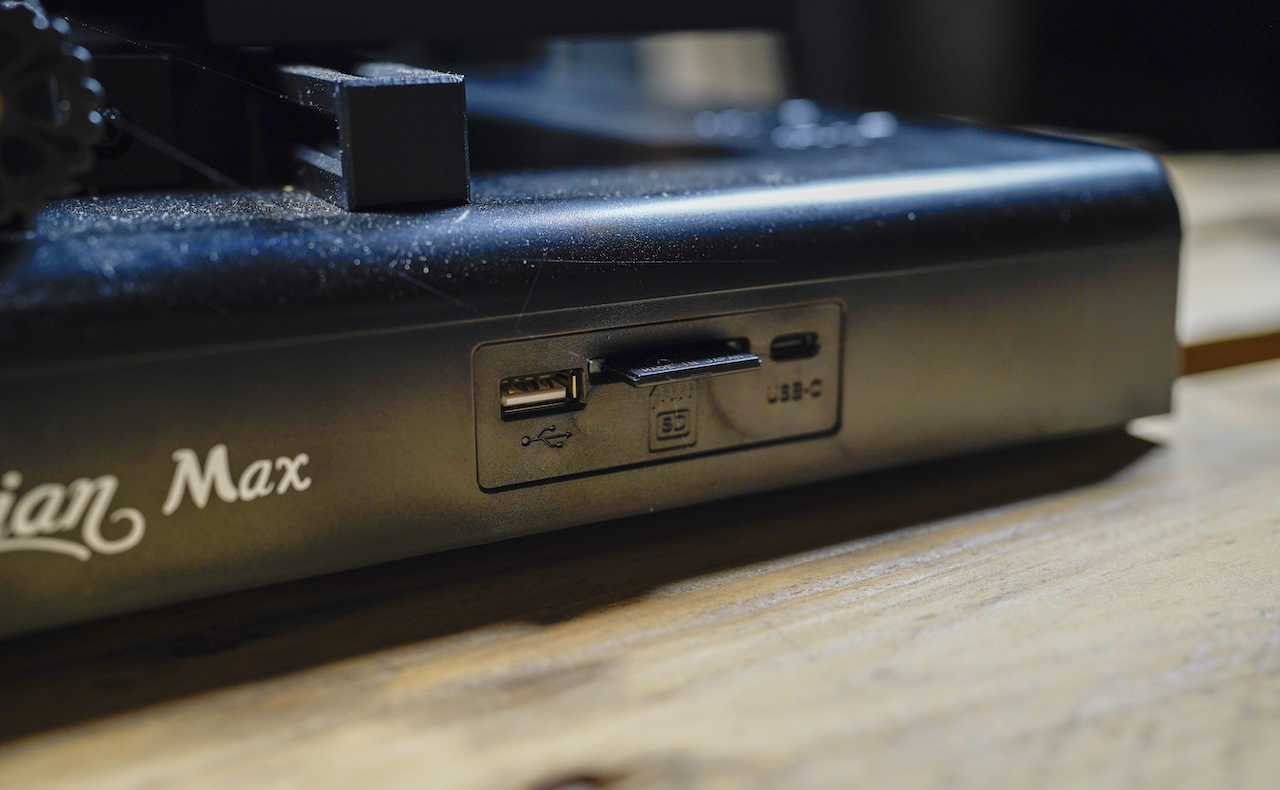
Once assembled, the machine looks very neat, with the power socket well placed to the side, a touch screen control panel, USB and SD card slot on the front.
There are also two neat additions to the design that has absolutely no impact on the machine’s functionality but are great. The first are two SD card slots so you can keep spare SD ready for use when you need them. Another feature is a small cavity hidden away where you can stash tools.
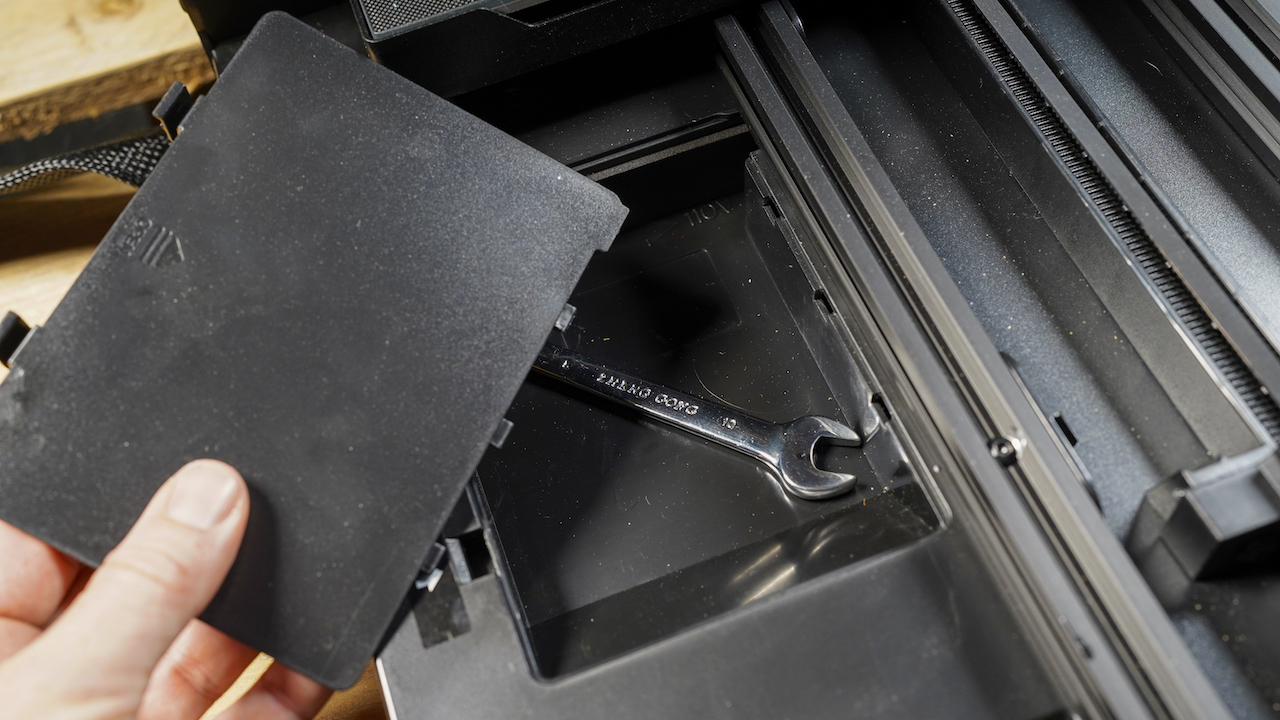
The rest of the design is in line with most other 3D printers, with a plastic carry handle, reel holder, all-in-one hot end and extruder.
The one thing we would say about the design is that while the construction is solid, the base and some parts feel a bit plasticy. For example, the handle used to carry the printer is fine but feels a bit cheap, and the finish around the power socket, tool compartment and base all felt a little flimsy.
As you look over the printer, you can see that this is a printer designed to get on with the job; there’s no room for tinkering, tweaking or upgrading, and while this may put off some, it makes it an ideal choice for anyone just getting into 3D printing, modellers and crafters.
Features
The size of the Mingda Magician Max instantly stands out, with the tall stature impressing once the machine is constructed. The machine offers a print size of 320 x 320 x 400mm.
Like many recent machines, a lot of the heavy set-up has been done for you, and after unboxing, a couple of bolts and wires need to be screwed and plugged into place.
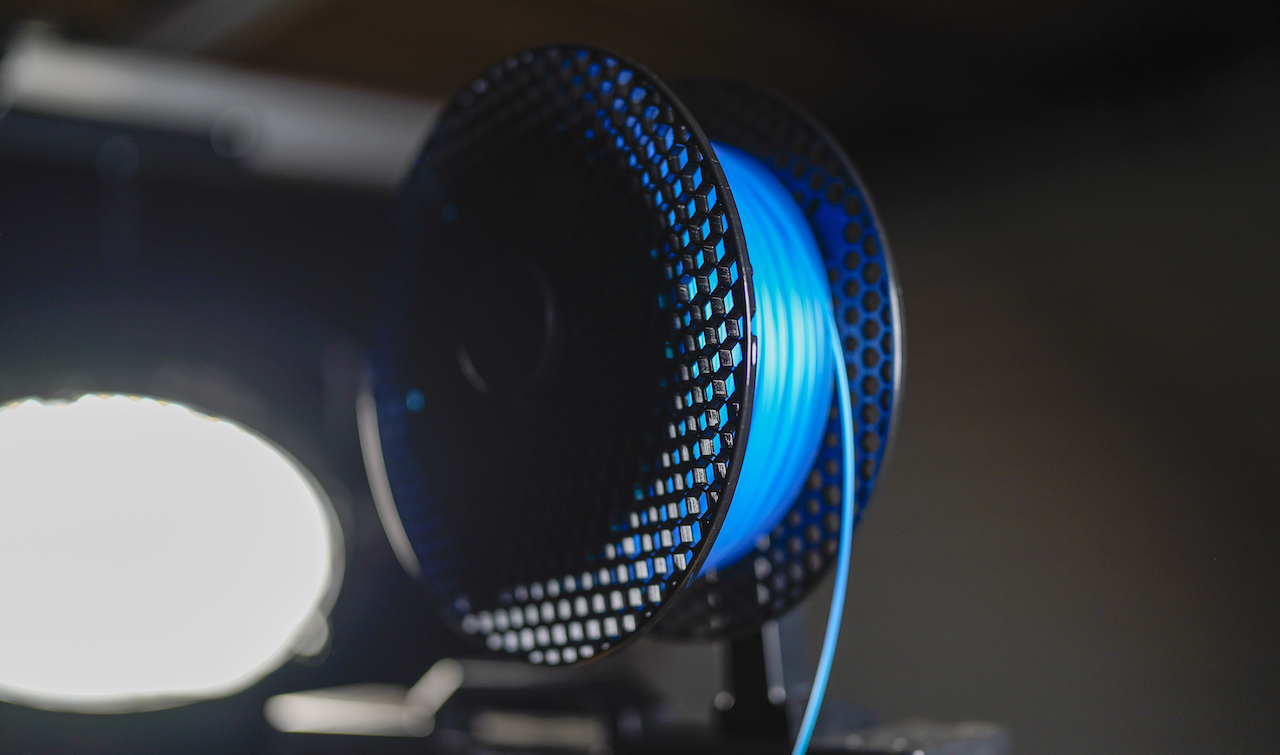
Even bed leveling is a straightforward process with one click on the touch screen doing the job. While the machine is equipped with a filament run-out detection sensor, the 1.75mm filament must be manually fed into the two gears of the direct drive extruder unit. This extruder offers excellent compatibility with a huge variety of materials, with gears gripping the filament tightly and pushing it through the system.

The tool head is equipped with a fine 0.4mm nozzle that can reach a temperature of 260ºC, and this is enough to support most standard materials, including PLA, ABS, PETG and TPU. Another nice touch here is that the nozzle is of the standard thread size and can be replaced when it wears out or if you want to replace it with a hardened variety. The average print speeds are between 60-80mm second, although it can be pushed to an impressive 90mm/s.
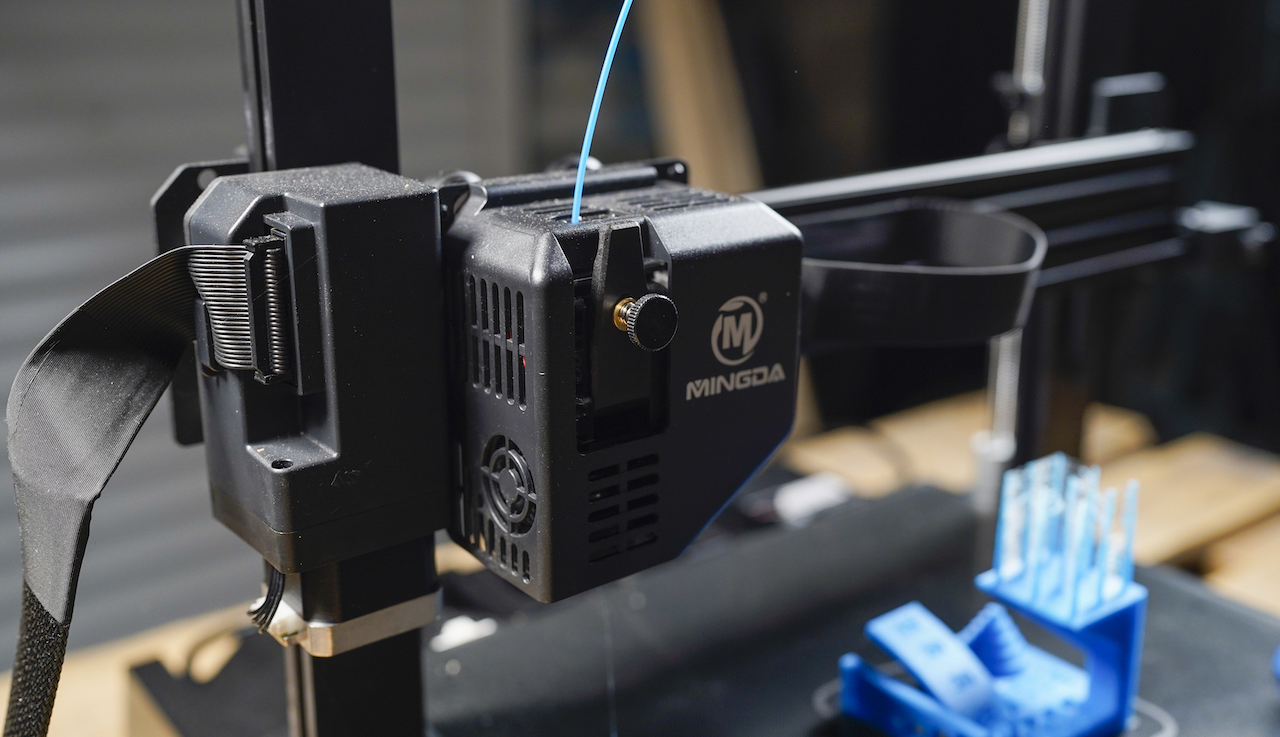
An increasingly common feature we’re seeing on 3D printers is the LCD screen; this enables you to adjust the printer settings and access prints from an SD card or USB stick. The user interface is simple but extremely easy to understand and navigate.
Performance
The assembly of the Mingda Magician Max takes no more than 10 minutes and is one of the easiest printers I’ve assembled. Switching on and the machine fires into life, then it’s a single press of the one-click levelling, and the printer should be ready for printing.
In reality, as the first layer printed, a little adjustment of the Z-axis was required to get the filament to stick securely to the glass bed. It only took a couple of 5 x 5 test grids to get the values to spot on.
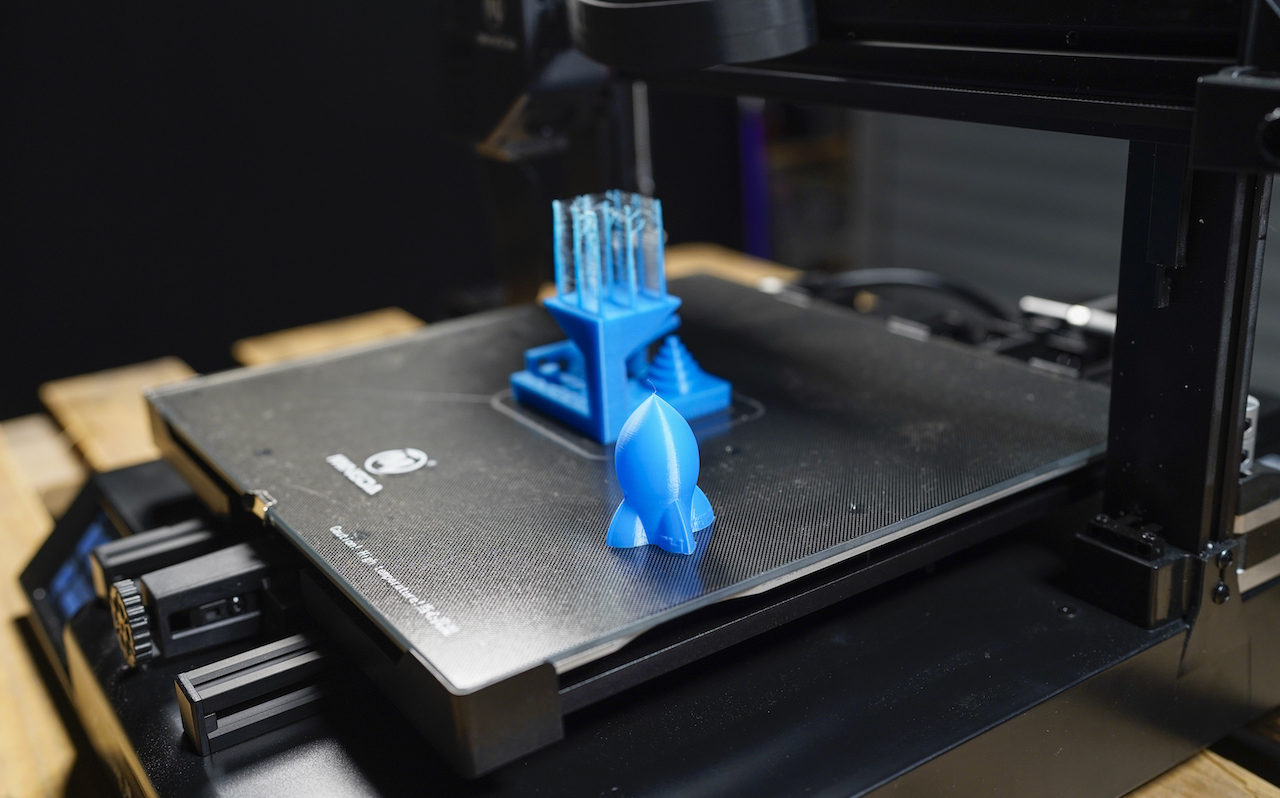
Next, we started with the test print supplied and then a few 3D Benchy prints; again, I found a little adjustment was needed with the belts requiring tensioning to stop the ripple effect on the outer print wall.
Retraction also needed adjustment as fine stringing was apparent. It took a while to fully tune the machine, with the initial prints being good, but the prints looked exceptional after tuning.
The Mingda Magician Max is a very impressive machine despite some of its cheaper build characteristics. Unfortunately, the plastic-ness of some of the build is the payoff for a printer that comes in at this price, size, and with such a decent feature set.
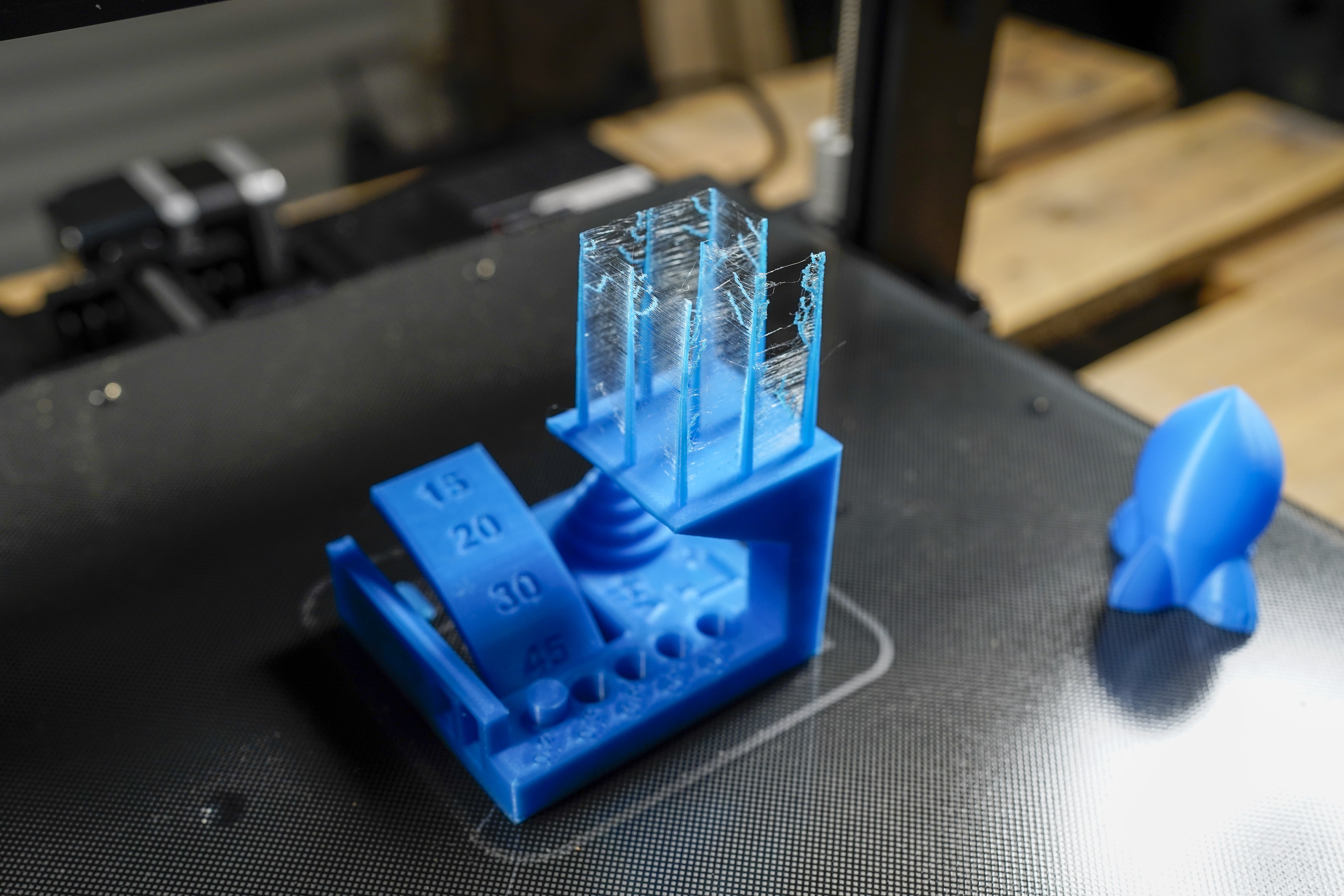
Taking it through to the tests and the 3D Benchy stress proved an easy print at all settings; there was a bit of an issue early on with belt tension, but once corrected, the side wall blemish soon resolved.
On to the Autodesk / Kickstart 3D bench test, and the results are impressive.
Print Quality
Dimensional accuracy – score of 5
Target 25 = X: 24.84mm / 0.16mm Error | Y: 24.84mm / 0.16mm Error
Target 20 = X: 20mm / 0.mm Error | Y: 19.87mm / 0.13mm Error
Target 15 = X: 15mm / 0mm Error | Y: 14.86mm / 0.14mm Error
Target 10 = X: 10.07mm / 0.07mm Error | Y: 9.87mm / 0.13mm Error
Target 5 = X: 5.11mm / 0.11mm Error | Y: 4.89mm / 0.11mm Error
X Error Average = 0.068
Y Error Average = 0.134
X&Y Error Average = 0.101
Fine Flow Control – score of 2.5
Fine Negative Features – score of 4
Overhangs – score of 5
Bridging – score of 5
XY resonance – score of 2.5
Z-axis alignment – score of 2.5
Adding up the totals gives a final score of 26.5 out of 30.
Verdict
Let’s start with what is not so good. The build quality is slightly cheap and plasticy, and on our review sample, a couple of the screws in the power supply socket were loose to the point that if we hadn’t tightened them, they would have fallen out.
And while the print speeds are fast, there is a wait for the system to warm up – for some prints, this was more than five to ten minutes.
However, when it came to the overall construction of the machine, it’s all well laid out and solid; it’s just some of the aesthetics are a little rough around the edges.
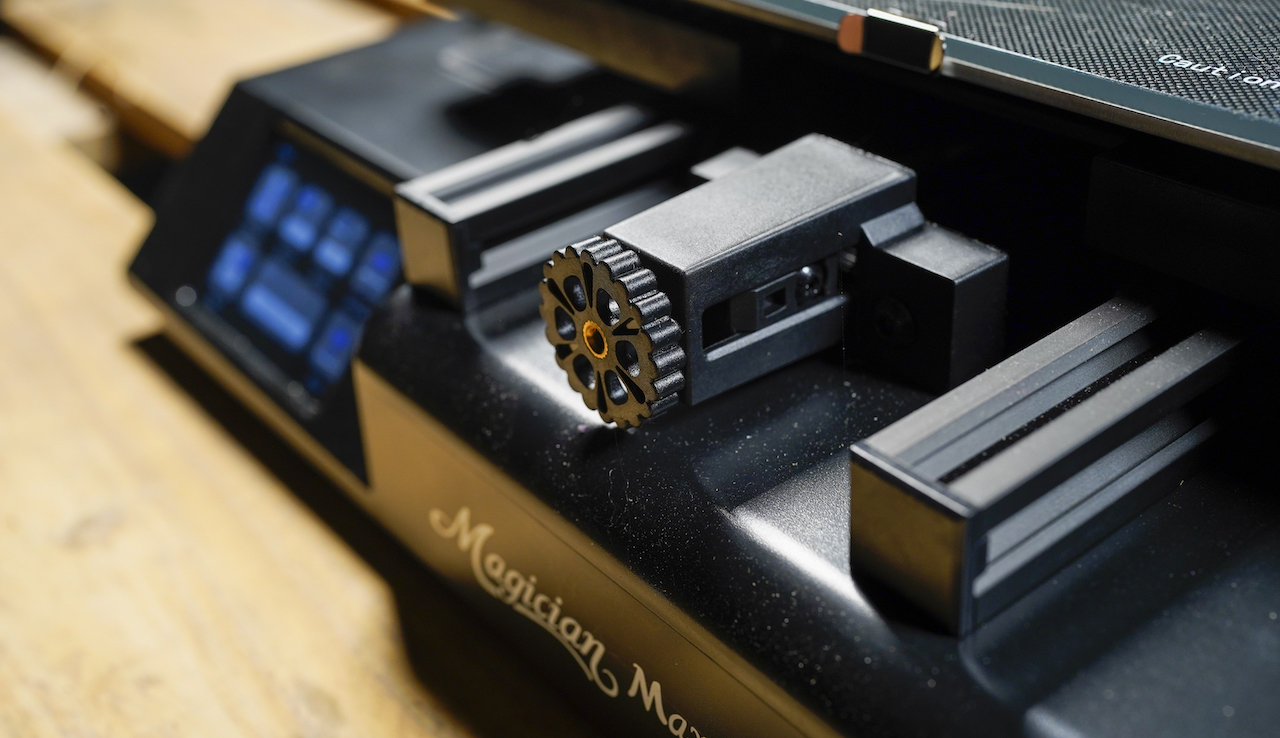
Once the machine is assembled, the set-up process is extremely quick, and once the first few test prints are out and a little fine-tuning of belt tension, Z-axis height and retraction are carried out, the actual print quality is exceptional.
For a printer of this size and price, we were not expecting the quality of print that is produced; this is comparable with far more expensive printers.
The Mingda Magician Max, however, is a machine that does what it does. It hasn’t been designed to be upgraded, tinkered with or adapted beyond what it is, and for some people, that will be restrictive. However, with the increasing market for people who want a solid 3D printer to print with, this hits the mark.
The size of the Max version is big, and the print quality and reliability is excellent. If you’re in the market for a well-priced 3D printer with a big print volume, then you really can’t go wrong with the Mingda Magician Max.



